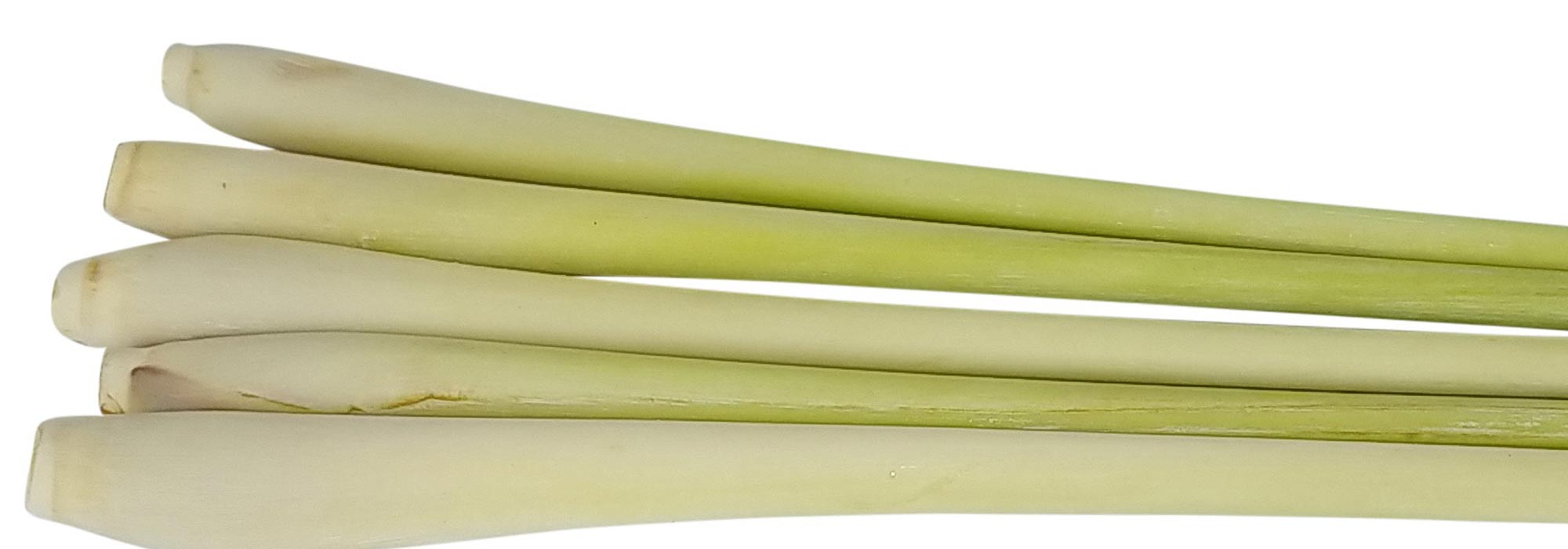
Lemongrass: sowing, growing, harvest
Contents
Lemongrass in a nutshell
- Herbaceous perennial and culinary plant, lemongrass is native to Southeast Asia.
- Very popular in Asia, only the fleshy base of the leaves is used as a condiment to flavour all kinds of dishes.
- Used fresh or dried in infusions, the leaves rich in vitamin C are digestive and refreshing.
- Lemongrass is a natural repellent against mosquitoes and leaf-mining flies.
- Be careful, Madagascar lemongrass should not be confused with lemon verbena or lemon balm, two aromatic plants with lemony scents, but quite different.
A word from our expert
Madagascan lemongrass is a tropical herbaceous perennial plant, cultivated for its unique aroma that is essential in Asian cuisine. It is grown for both its culinary qualities and its medicinal properties, as well as its ability to repel mosquitoes and leaf miners.
The white and fleshy part of the stem, which is also the most tender, is used in the preparation of many dishes from Indonesia, Cambodia, Thailand, Vietnam, and Malaysia.
Consumed fresh (most often), sometimes dried, the leaves of Madagascan lemongrass are used to make infusions and herbal teas with digestive and refreshing properties.
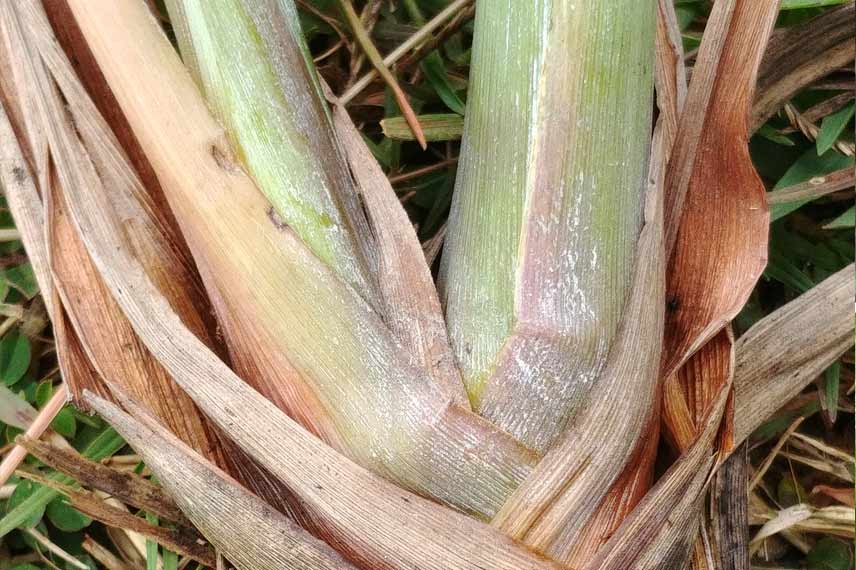
Madagascan lemongrass is a frost-sensitive plant, quite demanding in terms of both heat and water. Experienced gardeners may cultivate it in the ground, but only in very mild climates (it does not tolerate temperatures below 8°C). Elsewhere, it is grown in pots, ensuring it receives a warm and sunny exposure and regular watering without waterlogging. While it can adapt to all types of well-drained soil, lemongrass particularly enjoys rich and moist substrates. It is planted in spring for a harvest (from May to October) as needed.
Here are all our tips on this plant with a thousand culinary and medicinal virtues.
Description and Botany
Botanical data
- Latin name Cymbopogon citratus
- Family Gramineae (Poaceae)
- Common name Indian Lemongrass, Indian Verbena, Madagascar Lemongrass, Gabon Lemongrass, Níngméng cào, Lemon Grass, Oil grass
- Flowering autumn
- Height up to 1.50 m
- Sun exposure full sun
- Soil type all, well-drained, slightly enriched
- Hardiness -1°C
Madagascar lemongrass, Indian verbena, or Indian lemongrass… is a perennial herbaceous plant native to Southeast Asia, belonging to the grass family.
There are about fifty species of lemongrass, among which Cymbopogon citratus (Madagascar lemongrass), Cymbopogon nardus Rendle (Ceylon lemongrass), and Cymbopogon winterianus (Java lemongrass) are the most well-known.
This perennial herbaceous plant is equipped with a rhizomatous rootstock composed of rhizomes with fine rootlets. Benefiting from rapid growth, Madagascar lemongrass forms a dense, spreading clump of 0.40 to 1 m in height, composed of aromatic evergreen foliage that is grey-green in colour, exuding a powerful lemon scent. Its long, sheathing, narrow, linear leaves have very sharp, tapered edges and are strongly marked by a central vein.
The flowering of lemongrass occurs in autumn (depending on the region) and appears in inflorescences composed of panicles of small flowers that are very pale yellow. The flowering takes the form of sessile, bisexual spikelets measuring 3 to 7 mm, equipped with beards of 5 to 6 cm.
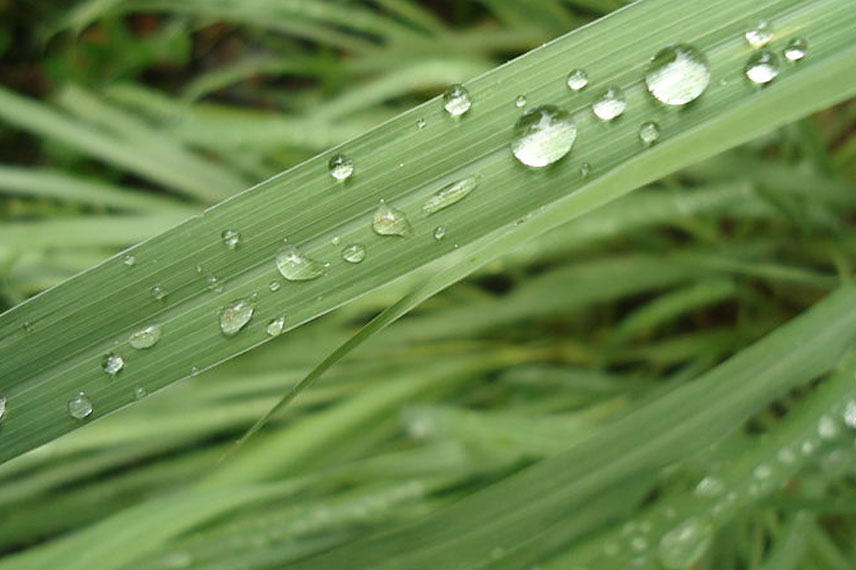
Leaves of Madagascar lemongrass – © Obsidian Soul
Read also
Growing lemongrass in a potOur varieties
[product sku=”151812″ blog_description=”Madagascar lemongrass is a perennial tropical grass with linear leaves and delightfully lemon-scented stems. Its stems are used as a seasoning, and its leaves can be prepared as an infusion. It is grown in pots to protect it from the cold in winter.” template=”listing1″ /]
Planting Madagascar Lemongrass
Where to plant lemongrass?
Madagascar lemongrass particularly enjoys warm exposures and full sun.
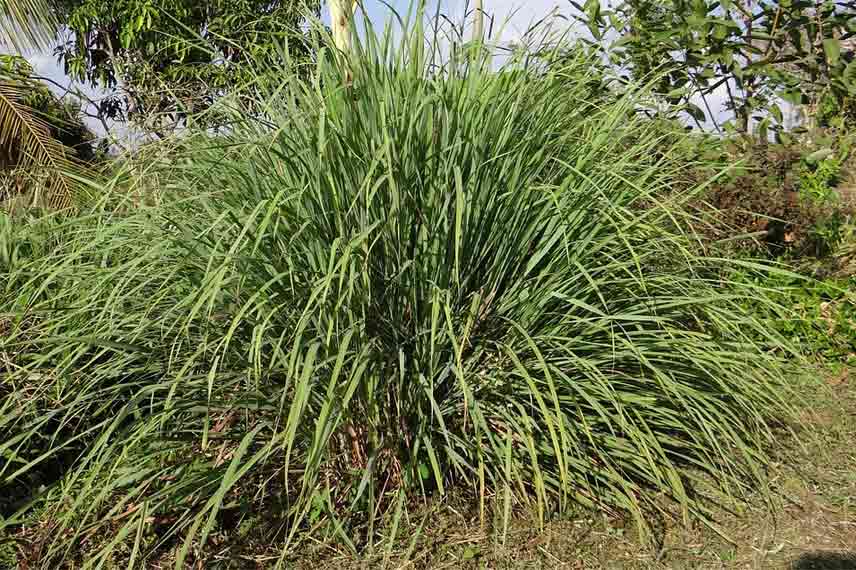
Lemongrass is a tender plant that cannot survive below -1°C. It is therefore grown in pots in most of the country, so it can be brought indoors in autumn under a greenhouse or frost-free shelter. The wintering space should also provide good light. During the warm season, potted lemongrass can be placed anywhere on a terrace, balcony, in a vegetable garden, or garden, as long as the location is south-facing. Positioned near the house, your Madagascar lemongrass will keep mosquitoes away from your home. In the vegetable garden, it will effectively repel leaf miner flies.
If you live along the Mediterranean coast, you can choose to grow your lemongrass in a pot or in the ground, always in a south-facing position, and in a sheltered area from strong winds. Be sure to protect the stump with a thick mulch to guard against the cold during winter.
When to plant lemongrass?
Madagascar lemongrass is planted in spring, when all risk of frost has passed, around mid-May (depending on the region). Note that a minimum temperature of 10°C is necessary for its proper development.
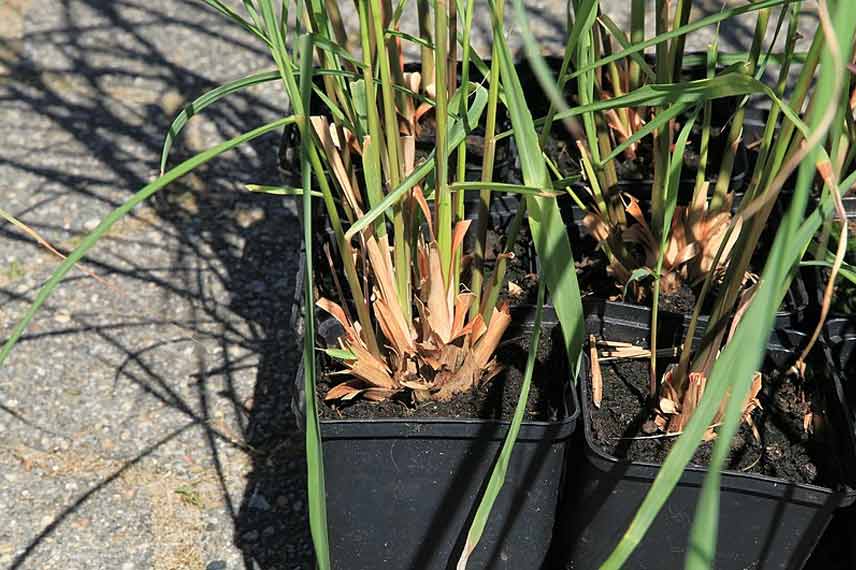
© Frank Vincentz
How to plant lemongrass?
- Get a pot with a diameter of at least 30 cm.
- Place a layer of clay balls (or possibly gravel) at the bottom of the pot.
- Prepare a substrate made up of 1/3 garden soil, 1/3 potting soil, and 1/3 sand.
- Place the lemongrass plant in the pot.
- Water generously, ensuring to not let water stagnate in a saucer.
- Add natural fertiliser to the substrate about one month after planting.
Read also
7 exotic aromatic plants easy to growMaintenance and Care
During summer and spring, Madagascar lemongrass needs to be watered regularly (the surface soil should remain moist at all times), then less frequently in autumn. In winter, watering is stopped.
For lemongrass grown in the garden (only in the south of France, along the Mediterranean coast), remember to cover the stump with a thick mulch. This will better protect it from the winter cold.
Bring your potted plants indoors to winter them in a frost-free space. Repotting is necessary as soon as the roots, too cramped, start to slightly overflow from the pot. It is estimated that this repotting occurs approximately every 2 years. Also for your potted plants, remember to apply liquid fertiliser in spring. Finally, make sure to remove withered leaves as they appear, and do not hesitate to remove the oldest stems.
Harvest, storage and use
Harvesting Lemongrass
The harvest of the stems of Cymbopogon citratus only occurs when the lemongrass has produced enough bulbs and has abundant foliage. You will need to wait between 3 and 4 years before you can harvest it.
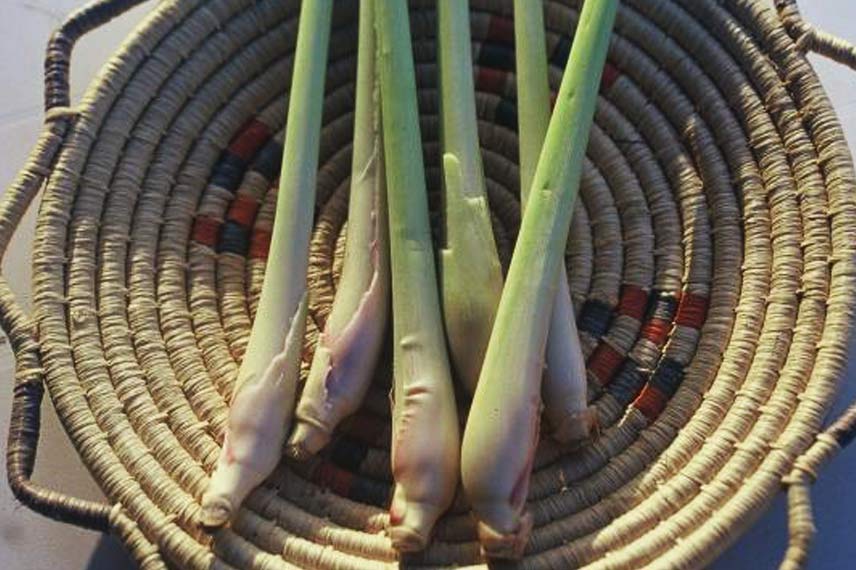
Lemongrass Stems – Flickr – ©voyage-madagascar.org
You can then pluck the young leaves as needed. Cut the stem at its base to properly harvest the bulb, the most aromatic and tender part of the plant.
Note: Always avoid harvesting lemongrass stems as winter approaches. Indeed, the plant withstands winter hardships much better with its foliage.
Storing Lemongrass
Madagascar lemongrass can be stored for a few days in the refrigerator. To do this, wrap the stems individually in plastic bags. Then place the bags in the vegetable drawer of your refrigerator, where they can be kept for a maximum of 5 days. After this period, rather than throwing them away, you can freeze the lemongrass, which handles this treatment well. No prior blanching is necessary here, provided that the tops and bottoms of the stems are frozen separately.
By air-drying the lemongrass (after chopping it), you can preserve it for a few months, but its fragrance will be altered.
Note: It is generally recommended to use fresh stems rather than dried ones, as they are much more aromatic.
Uses of Lemongrass
When grown in pots, the young leaves of Indian lemongrass can be harvested throughout the year, depending on your needs. Only the fleshy and tender base of this aromatic rush is used fresh as a condiment in Southeast Asian cuisine (Indonesia, Cambodia, Thailand, Vietnam, Malaysia). Madagascar lemongrass flavours curries, vegetable, meat, and fish dishes, as well as sauces and soups… Fresh or dried, the leaves rich in vitamin C are used in infusions and digestive and refreshing herbal teas.
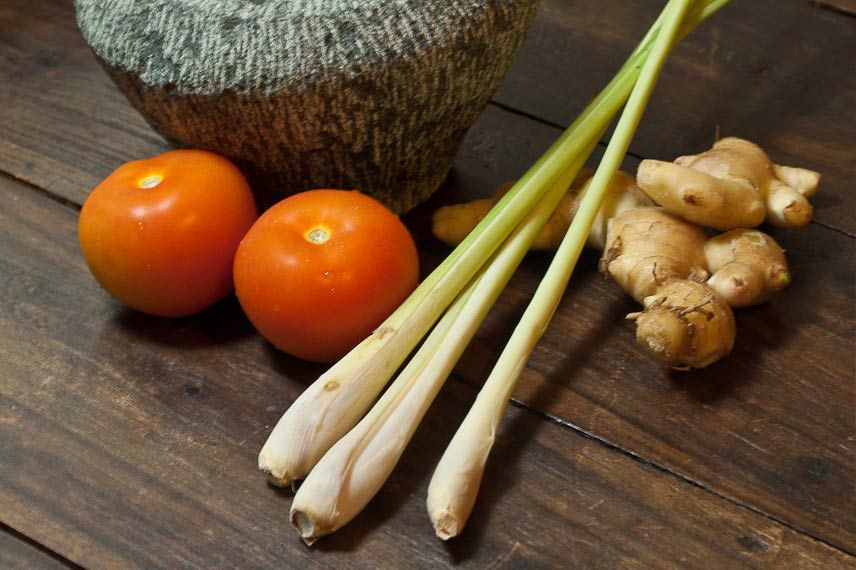
In summer, the strong scent of Cymbopogon citratus also helps to repel mosquitoes. It can therefore be quite useful to plant it near a garden seating area or to use it in the form of essential oil to keep pests at bay. In the vegetable garden, lemongrass is planted near tomatoes, melons, peppers, etc., as it helps to repel leaf miners.
Stomachic and diuretic, Cymbopogon citratus is a well-known plant in traditional Asian and Indian medicines. With antiviral and antibacterial properties, lemongrass is used to combat many bacteria.
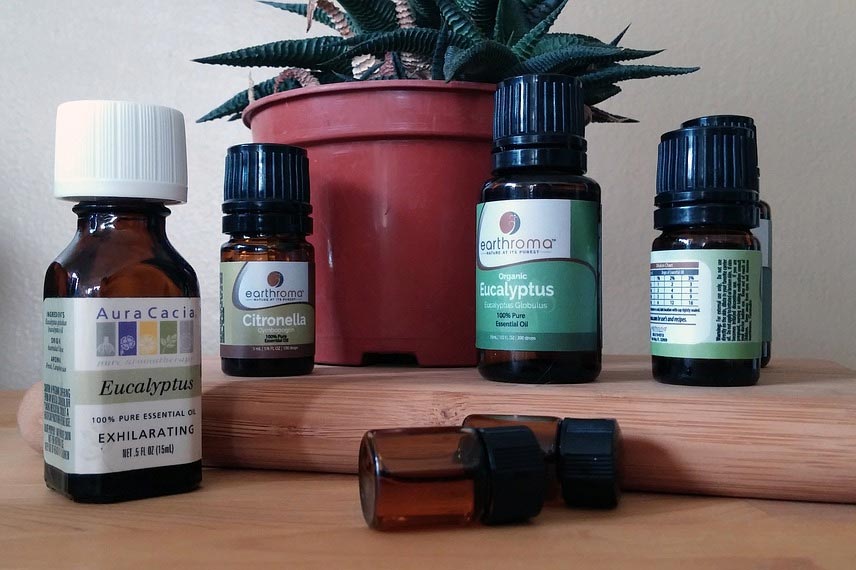
The essential oil extracted from this plant is renowned for its analgesic, anti-inflammatory, antispasmodic, expectorant, and hypotensive properties. It is particularly included in the composition of anti-mosquito products. Pure lemongrass essential oil can be dermocaustic (causing irritation and burns) and should never come into contact with mucous membranes (mouth, eyes, genital areas, etc.).
Diseases and potential pests
Lemongrass is a naturally repellent plant that is used to drive away insects. However, lemongrass leaves are appreciated by snails.
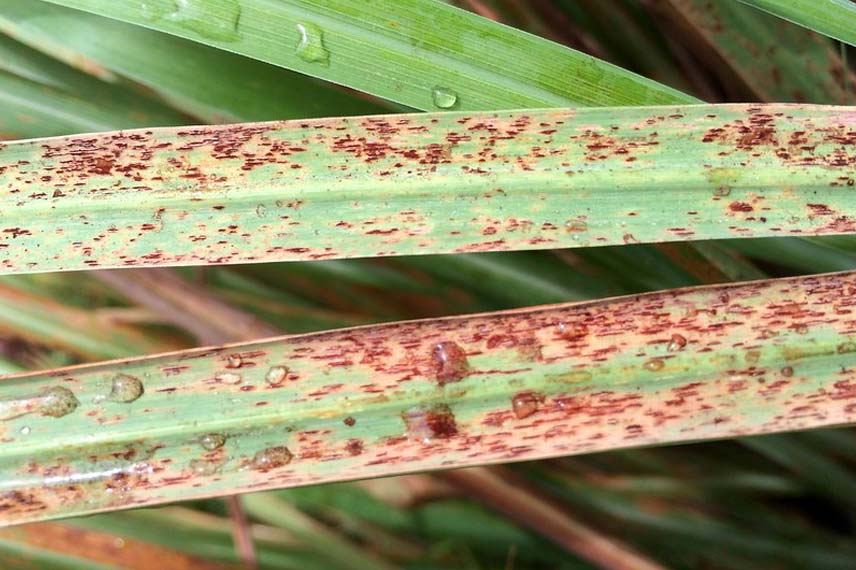
While Cymbopogon citratus is not subject to serious diseases, it can happen that some leaves wilt and become covered with brown or rust-coloured spots at their tips. In this case, simply cut off the infected leaves and spray the entire plant with a natural fungicidal product approved for edible plants.
Lemongrass propagation
In France, the two simplest methods to propagate Cymbopogon citratus are clump division and stem cuttings. However, while gardeners generally do not start growing lemongrass from seeds, it is important to know that sowing is entirely possible, provided you obtain the seeds, as lemongrass does not flower in our climates.
Clump Division of Lemongrass
- Wait a few years before dividing a healthy plant.
- Divide the clumps of lemongrass in spring.
- Dig up the root ball and cut it in half using a sharp, well-disinfected blade.
- Get a pot with a minimum diameter of 30 cm.
- Place a layer of clay balls (or possibly gravel) at the bottom of the pot.
- Fill the pot with a substrate made up of 1/3 garden soil, 1/3 potting soil, and 1/3 sand.
- Place the division extracted from the mother plant in the pot.
Stem Cutting of Madagascar Lemongrass
- Stem cuttings of lemongrass are ideally done in spring.
- Cut a stem at the base and place it in a vase filled with water.
- Small roots will form after a few weeks.
- Then plant it in a pot filled with a substrate made up of 1/3 garden soil, 1/3 potting soil, and 1/3 sand.
Sowing Cymbopogon citratus
- Sowing lemongrass takes place between January and March in a heated greenhouse.
- Place the seeds in a pot filled with moist, well-drained seed compost.
- Lightly cover the seeds with the substrate.
- Place your lemongrass seedlings in a warm space, at a temperature between 20 and 25°C.
- Ensure to keep the substrate consistently moist, but not waterlogged.
- Lemongrass germinates in 20 to 40 days, with a high germination rate.
- Transplant seedlings that are 15 cm tall into a pot with a minimum diameter of 30 cm.
- Space them about 5 to 7 cm apart to allow the roots to develop properly.
Pairing lemongrass
Madagascar lemongrass settles perfectly near a vegetable garden. It pairs particularly well with dill, round-leaved sweet sorrel, mojito mint, and pizza marjoram.
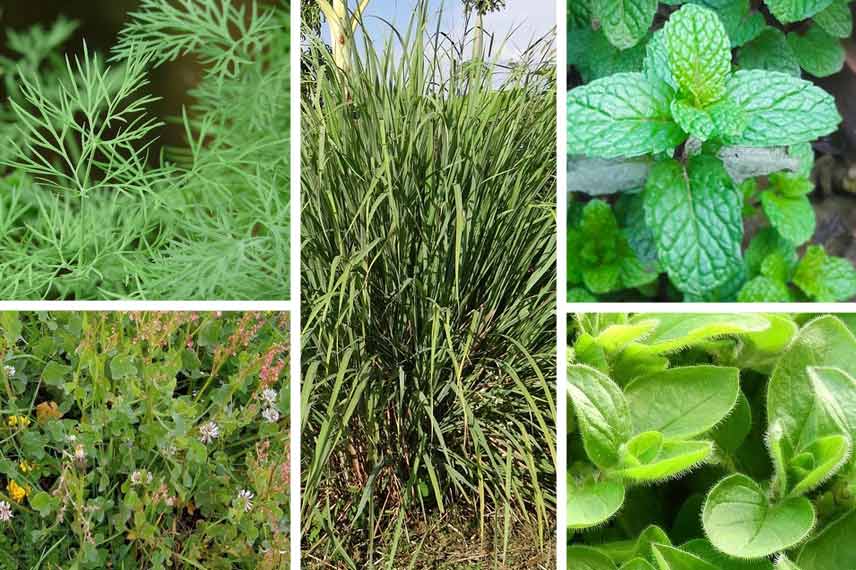
Useful resources
- For further reading, discover how to grow lemongrass in a pot.
- Discover our advice sheet: 5 plants that repel wasps
- Learn how to make homemade lemongrass oil!
- Get a Madagascan lemongrass plant in just a few clicks from the Promesse de fleurs online shop.
- Subscribe!
- Contents































Comments